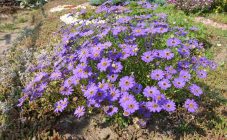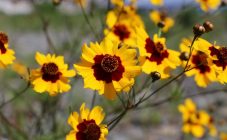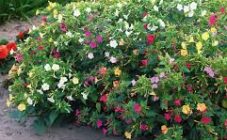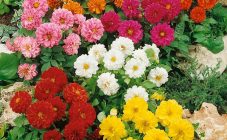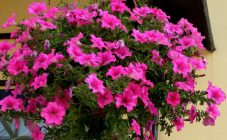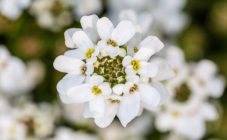Content:
Recently, the basil plant has gained popularity. It is appreciated not only for its decorative appearance, but also for its medicinal properties. Blooming basil is able to decorate any garden, moreover, it requires minimal maintenance.
Briefly about culture
Basil is a herbaceous perennial plant from the Buttercup family. Various studies have found that there are from 120 to 200 varieties of it, but the exact number has not been determined. Even in Ancient Russia, some species were used for medicinal purposes. And today it is also used to create bouquets.
Description of the variety
The most striking representative of the plant is the basil delaveya. This is a tall plant that reaches a height of 150-200 cm. It has paniculate inflorescences of a lilac-lilac shade. China is considered the homeland. Flowering lasts throughout the summer. The most popular varieties of this variety are:
- Hinckley (rich green leaves, purple stems and lilac flowers);
- Album (white flowers);
- basil Delavayi Hewitt s Double (flowers from pink to purple).
Basil making: planting and care
For planting, you can purchase a plant in the nursery. In spring, seedlings are sold in containers with soil. This method is considered the easiest. But it is also possible to plant it after the autumn division of the bush. It can be stored for 2-3 months in a refrigerator compartment on the lower shelf to slow down earlier awakening. A plant on which the buds have begun to swell should be planted in a pot. But in this case, it is not necessary to keep the basil at room temperature. It is enough that it is about 12 ° C. However, he also needs moderate watering and good lighting. The basil is transplanted into the open ground in early spring or at the end of August.
Further care
This plant is considered an unpretentious inhabitant of gardens, but it is impossible not to care for it at all. For full flowering, the following work will be required:
- Watering. Moisture is required for young plants, as well as those basilists that are planted in direct sunlight. The rest are watered only in the heat.
- Fertilization. The first 3 years after planting, basilists do not need feeding. In the subsequent ones, organic (in autumn) and complex mineral fertilizers (during the flowering period) are applied.
- Weeding and loosening. It is carried out as needed. This is more true for young plants.
- Mulching is carried out in order to prevent abundant evaporation of moisture from the soil, and also the event prevents the appearance of weeds. It is advisable to carry out this procedure during the preparation for winter.
- Pruning. It is done after the basil has completely faded. Its entire aboveground part is completely removed.
Diseases and pests
Basil Hewitt's Double, as a rule, is not affected by pests and does not suffer from diseases. But under some conditions, it can become infected with powdery mildew.The first sign that the plant is affected is the appearance of whitish spots on the leaves, and the stems become black. Then the foliage turns yellow, starting from the lower tiers. Already at the beginning of the disease, the plant should be treated with the finished topaz preparation. To prevent the disease, it is recommended to carry out preventive measures.
With a lack of moisture in the soil, the basil may be damaged by aphids or bronzes. To combat them, insecticides are used: acarin, karbofos, biotlin or bankol. Processing is carried out not only on the stems and leaves of the plant, but also on the soil next to them.
Use in garden decoration
Basil Hevits Double is used to create landscape design: lawns, alpine hills, which are located in the shady parts of parks and home gardens. It is planted near the walls of buildings and along fences. Planting is often carried out in tree-trunk circles, as well as in the background of grassy curbs.
Planting and caring for the basil dove does not require significant effort. Since it is a perennial plant, annual sowing activities are eliminated, which makes it easier to grow it. It can become a garden decoration thanks to its delicate flowers that bloom throughout the summer season.


